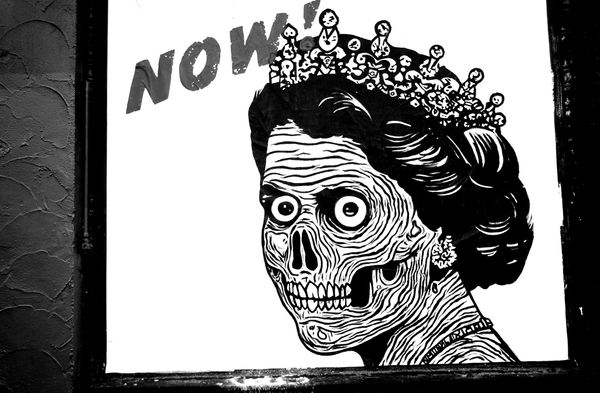As protests continue to erupt across the United States in response to the police killing of George Floyd, the attitude of “well, at least we live in Canada” has remained a common refrain among commenters in our country. Yet even a cursory glance at the last few months in Canada illustrates that systemic police brutality isn’t exclusive to the U.S.
On Friday, the RCMP in New Brunswick shot and killed Rodney Levi, an Indigenous man reported to have been having a mental health crisis. On June 4, police in New Brunswick shot and killed Chantel Moore, an Indigenous woman, during a wellness check. Also this month, police in Winnipeg were caught on video kicking and kneeing an already downed Indigenous man.
On May 27, Regis Korchinski-Paquet — a black and Indigenous woman — fell to her death from her balcony in Toronto after police were called to the apartment. Korchinski-Paquet’s family members claim she was pushed off the balcony by police. The Special Investigations Unit is now investigating her death.
In April, the Winnipeg Police Service killed three Indigenous people in only 10 days, including 16-year-old Eishia Hudson. That same month, Peel police in Brampton, Ont., killed D’Andre Campbell, a Black man experiencing a mental health crisis.
In March, Athabasca Chipewyan First Nation Chief Allan Adam was brutally assaulted by the RCMP in Alberta after being pulled over for driving with an expired license plate.
Throughout January and February, there was mass resistance to the construction of a pipeline through unceded Wet’suwet’en territory. RCMP were criticized for brandishing military style weapons against unarmed civilians.
Black and Indigenous people in the U.S. and Canada are over-represented in deaths following interactions with the police.
In Canada, despite only making up 5 per cent of the population, 22 of the 61 people fatally shot by the RCMP between 2007 and 2017 were Indigenous. Meanwhile, according to a 2018 Ontario Human Rights Commission report, “Despite making up only 8.8 per cent of Toronto’s population … Black people were over-represented in [police] use of force cases (28.8 per cent), shootings (36 per cent), deadly encounters (61.5 per cent) and fatal shootings (70 per cent).
These similar disparities are not a coincidence but rather the result of the underlying power structures that determined how each country has developed.
Both the U.S. and Canada are settler-colonial states, meaning they were founded, and are developed, through the displacement and exploitation of the people indigenous to the land. In other words, one segment of the population is essentially ‘squeezed’ for all it has — land, labour, material wealth — in order to enrich the capitalist class of the nation taking shape. The result of this is entire segments of the population being relegated to poverty.
Moreover, to different degrees, both Canada and the U.S. benefited from slavery. The massive amount of wealth generated through slave labour and settler-colonialism provided the economic basis for the rapid industrial development that has made both countries into the forces they are today.
Racism emerged as both slavery and settler-colonialism required an ideological justification to make a clearly inhumane situation seem natural or even positive. In its early form, this manifested in the idea that these groups were uncivilized and not fully human, and so their subjection was necessary and even ultimately beneficial for them. This ideology proved essential in the development of policing in both Canada and the U.S.
In Canada, modern police forces can often trace their origins to supporting the needs of settler-colonialism. The RCMP, for example, has its roots in government attempts at suppressing the Red River Rebellion, an armed uprising of Métis and Indigenous people in 1869-1870.
In the U.S., many police forces began as slave patrols — essentially armed militias with sweeping powers tasked with capturing enslaved people who had escaped, and generally inspiring terror among Black populations.
The police continue to play a role in both countries that remains largely the same. Racist ideology has just evolved over time to better serve its purpose of obscuring the exploitative relations at the heart of settler-colonialism.
Those still claiming innocence in the face of popular action against police brutality and racism in the U.S. and Canada need to understand these parallels between our settler-colonial histories and realities that have led to this current political crisis. Racism, and police brutality to enforce it, exists in our states because the ruling class needs it to remain in power.
No amount of reform is capable of completely doing away with racism or police brutality, because they’re simply the expression of the underlying structures that define our societies. As such, police-abolitionist and anti-racist politics are inseparable from anti-capitalist, anti-settler-colonial, and anti-imperialist politics. Acknowledging that the problem exists here isn’t enough — we need to change these power structures.






